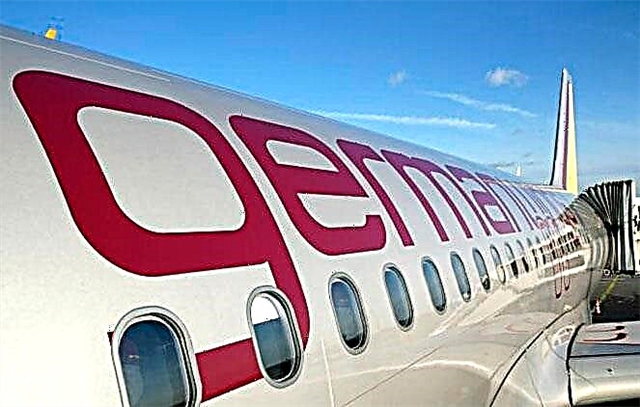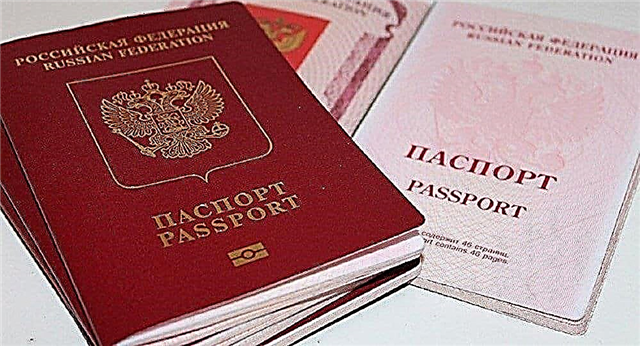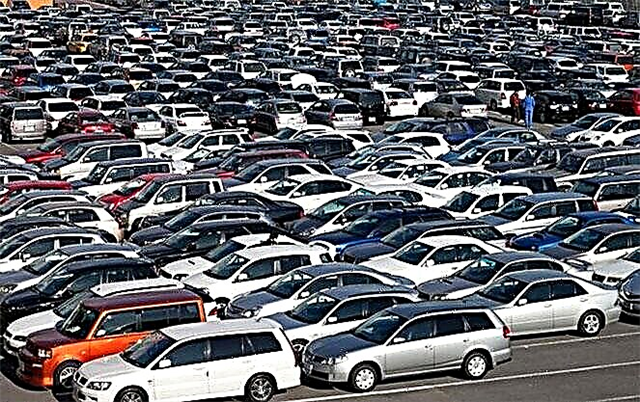Customs clearance of a car from Germany is a mandatory procedure for everyone who decides to buy a car in this country and legally import it into Russia or other CIS countries. Germany is home to six world-famous automotive brands, and our compatriots have long appreciated the excellent quality of vehicles that came off the assembly line of German factories. And even the high rate of the European currency is not an insurmountable obstacle for many buyers.

How to buy a car in Germany
The desire to bring a car from Germany from Russian car owners arises not only in connection with the desire to buy a model of a German brand. On the car market of this country, you can find cars from other world manufacturers: American, Japanese and European. Due to the high quality of roads in the EU countries, used cars can be found here in excellent condition, even with a mileage of 150-200 thousand kilometers.
As a rule, the indigenous people of Germany operate a car for no more than 3-5 years, and then sell it in order to purchase a new vehicle.
The German car market has certain advantages for Russians:
- sites with advertisements for dealers have a Russian-language version;
- VAT refund guarantee (19% of the purchase price);
- the vehicle first undergoes maintenance, and only then is sold;
- real mileage is always indicated;
- availability of a guarantee for used cars;
- the purchase can be made without a trip to Germany.
Ensuring the customs clearance process at the legislative level
The conditions for the import of vehicles into the territory of the Russian Federation are currently regulated by the following regulatory legal acts:
- Chapter 12 of the Customs Code of the Russian Federation, which contains the conditions for paying customs duties and making a security deposit when importing vehicles into the territory of the Customs Union.
- FCS order No. 302 dated 21.02. 2021, which regulates the payment of a customs deposit at fixed rates. They are used in the event that the buyer does not know in advance exactly which car model he will purchase.
- Agreement on the procedure for movement of goods for personal use by individuals across the border of the Customs Union dated 18.06. 2021. Appendix No. 5 to this document sets the rates of customs duties for individuals, depending on the volume of the engine and the cost of the imported car.
- Article 193 of the Tax Code of the Russian Federation regulates tax rates when importing excisable goods.
- Article 16.10 of the Code of Administrative Offenses of the Russian Federation provides for administrative liability for failure to comply with the terms of customs clearance.
- Decree of the Government of the Russian Federation No. 1291 dated 26.12.13 establishes the procedure for paying the utilization fee when importing vehicles.
The procedure for passing customs clearance

When planning to buy a vehicle abroad, you should not only know how to do it, but also take into account the following important rules:
- Both legal entities and ordinary citizens have the right to purchase vehicles abroad and import into the territory of the Russian Federation.
- The cost of customs clearance for each vehicle is calculated individually.
The final amount depends on the status of the owner (natural or legal person), the purpose of import (for personal or commercial purposes), the cost, age and engine power of the car.
- Before importing, the vehicle must be equipped with the ERA-Glonass system, the presence of which is mandatory on the territory of the Russian Federation. Without Glonass, the Federal Customs Service will not issue a vehicle passport (PTS).
- The country of origin does not affect the amount of customs duties and other payments.
- Only vehicles with an environmental class of at least EURO 5 can cross the border of the Customs Union.
- A declaration is submitted to the customs authorities for calculating payments.
- For personal use, an individual has the right to import only one car per year.
If all documents are drawn up correctly, the entire customs clearance procedure will take no more than one day.
List of required documents
The customs clearance procedure requires the mandatory presence of the following documents:
- Sales contract with a German seller. It is advisable to buy a car from a dealer in order to maintain the possibility of VAT refunds after you leave the EU.
- Vehicle registration certificate. It must contain the VIN code, year of manufacture and information about previous owners. Of no small importance is not only the year, but also the month of production of the machine.
- A document confirming the passage of the technical inspection. Transit numbers cannot be obtained without it. Its validity period is 2 years.
- Certificate of conformity to the ecological class EURO 5.
- Certificate of removal of a vehicle from registration in Germany;
- International admission. It is necessary in cases where the buyer carries out the transportation of the car across the EU on its own. This document is required to obtain transit numbers.
- Doppelkarte insurance policy in two parts. A copy of green is required for registration of transit numbers, and a yellow one for movement in the EU countries.
- Vehicle export declaration. Drawn up by a representative of the seller in 3 copies at the customs office of the Federal Republic of Germany.
- To go through Russian customs, one of two types of declarations must be issued: TD-6 when importing a car on its own, GTE - if it is delivered by an auto transporter.
Customs clearance cost
The cost of customs clearance in Russia for citizens who import a car for personal use is much less than for legal entities. However, you can use preferential rates only if you import one car per year. Otherwise, the calculation will be made at the rates for legal entities.
Before you start looking for a suitable vehicle in the car market of Germany or other countries, it should be borne in mind that for personal use, an individual can only cheaply customs clearance of cars and motorcycles.
That is, the purchase of special equipment, commercial vehicles, a tractor and other similar types of transport is available only to legal entities.

If you want to drive a truck or bus from abroad for personal use, you should use the services of intermediary firms. They will purchase the model you have chosen in their own name, draw up the necessary documents, deliver it to your destination and hand it over to you.
The calculation of the customs duty is made taking into account the following points:
- year of manufacture of the vehicle;
- engine displacement;
- customs value.
The term “customs value” means the average market value of the imported model, and not the amount indicated in the declaration. In the case of legal entities, it is always taken into account, and with individuals - only when importing vehicles under the age of three years. The customs value in each individual case is determined by the FCS inspectors according to their service directories.
Customs duties for individuals
When buying a car abroad, ordinary citizens should pay attention to the following age categories of cars:
- up to 3 years old;
- from 3 to 5 years old;
- more than 5 years.
The most favorable rates are valid for cars aged 3 to 5 years.
If this limit is exceeded upwards, there will be a significant increase in duty rates. As mentioned above, not only the year, but also the month of production is of great importance. Therefore, the age of a used car should be between 60 and 120 months.
The calculation of duties for cars under the age of three is presented in the following table:

Duties for cars from 3 to 5 years are calculated excluding customs duties in the following order:

But the increased rates apply to cars over 5 years old:

Customs duties for individuals
For individuals, the calculation of duties is made taking into account the above age categories, as well as the customs value and the tax rate on engine displacement.
The import tariffs for vehicles with gasoline engines are presented in the following table:

In the case of diesel vehicles, the following rates apply:

Currently, there is no need to carry out all calculations manually - on the official website of the Federal Customs Service, this procedure can be performed online using a special calculator. To do this, in the special fields of the calculator, you need to enter the cost of the car, engine specifications, the age of the car and your status.

After clicking the "Calculate" button, you will immediately receive a finished result with an indication of the approximate amount and a list of upcoming payments.

Payment of excise and VAT
Obligations to pay excise and VAT are imposed only on legal entities. The amount of VAT, starting from 2021, is 20% of the value of the goods.
As for excise taxes, then for cars with an engine power of up to 90 liters. with. they are not provided.
Excise rates change every year. Their actual size up to the end of 2021 can be found in article 193 of the Tax Code of the Russian Federation.
Recycling collection
In the process of customs clearance, the recycling fee is obligatory paid by both individuals and legal entities, but at different rates. From April 1, 2021, the flat rate is 20,000 rubles.
When calculating the tax, this indicator is multiplied by an appropriate factor depending on the age of the vehicle. The current coefficients are presented in the following table:
| Vehicle age | Tariff for individuals | Tariff for legal entities |
|---|---|---|
| Up to 3 years | 0,17 | 9,08 |
| Over 3 years | 0,26 | 35,01 |
Customs deposit
Even before purchasing a car abroad, you must contact the FCS at your place of residence and make a customs deposit. It should be equal to the amount of duties, registration costs and recycling fees for the model that you intend to purchase.
If you have not yet decided on the choice, then the size of the deposit is calculated at fixed rates, according to the order of the FCS No. 302.
Some of the nuances of customs clearance
It is well known that a passenger car is designed to transport people, and a truck is designed for various goods. For this reason, if you buy a pickup truck, you have the question of how to clear it through customs, since the size of a pickup truck is not larger than that of a passenger car, but it is intended for transporting goods.

It should be borne in mind that any pickup can be cleared as a passenger car for personal use if it meets the following requirements:
- permitted weight is not more than 3.5 tons;
- the number of axles does not exceed two;
- the internal length of the cargo area does not exceed 50% of the length of the vehicle's wheelbase.
Separately, it is worth mentioning the features of customs clearance of trailers and trailer houses on wheels. All of them are self-sufficient vehicles, so they must be cleared at customs as a separate item.
In this case, the duty is paid from the customs value of the trailer in the following order:
- 30% - for individuals;
- 15% and mandatory payment of VAT at the rate of 20% - for legal entities.
How to import a car without customs clearance
Only vehicles belonging to:
- migrants;
- employees of consular and diplomatic services of foreign states;
- foreigners on the terms of temporary import;
- citizens of the Russian Federation who have citizenship or a residence permit in another state.
In all other cases, it is impossible to obtain a Title Deed for a car without proper import registration with the Federal Customs Service of the Russian Federation. And without this document, it cannot be registered with the traffic police and operated on Russian roads.
Conclusions
Thus, when buying a car in Germany or any other country, your expenses will not be limited only to the cost of purchasing and delivering it to your destination. You should take a responsible approach to this purchase and determine in advance the age and engine power of the vehicle so that the cost of the registration procedure does not become too burdensome for you.











